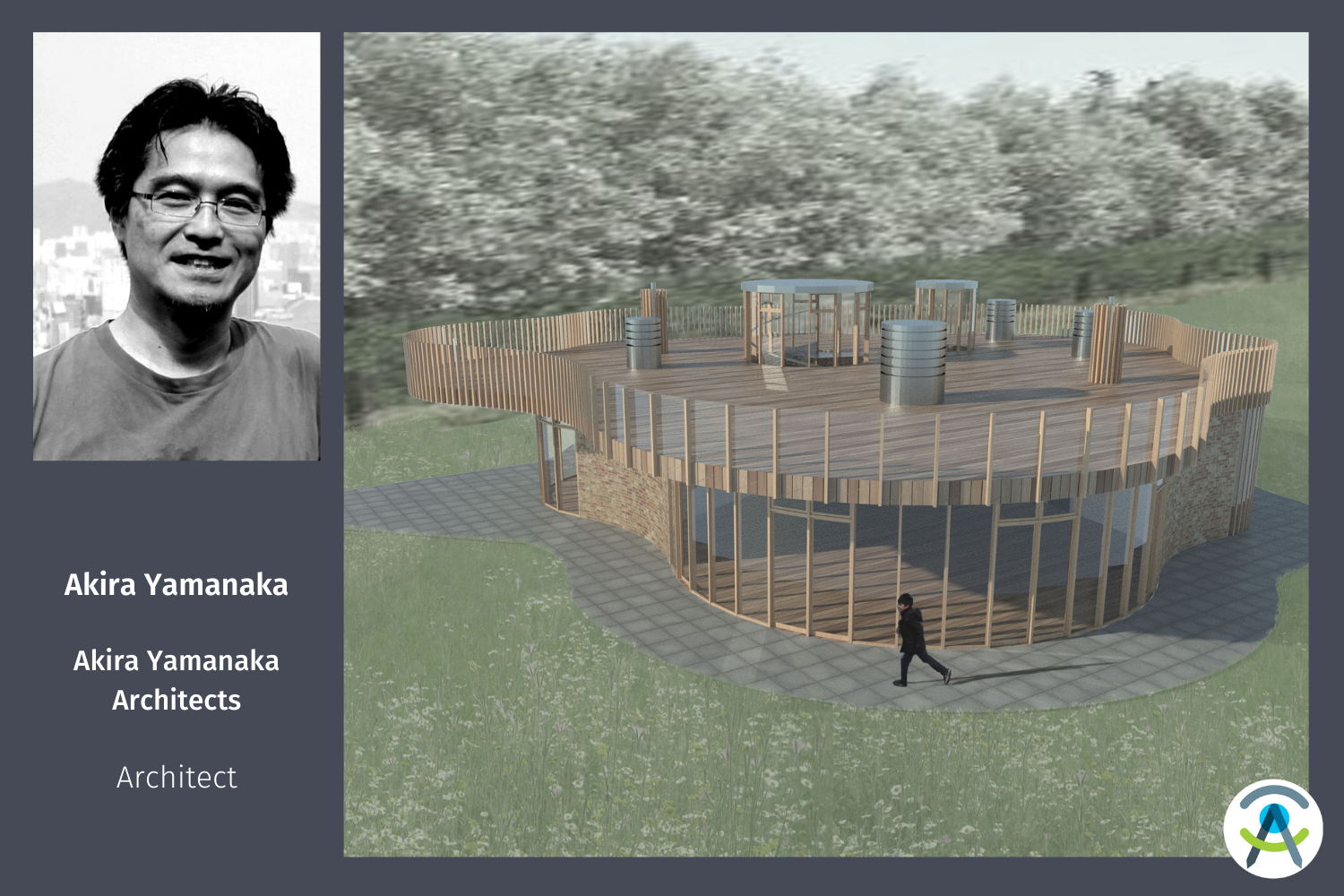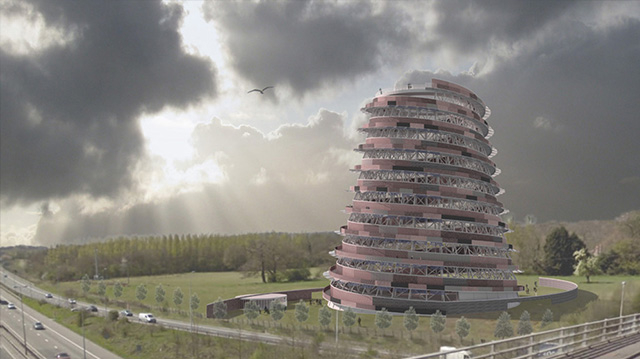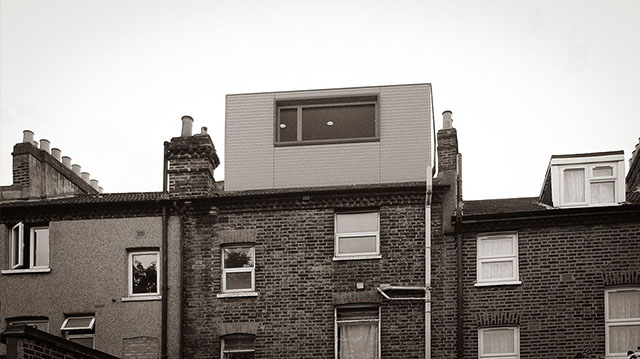Interview with Akira Yamanaka of Akira Yamanaka Architects

Meet Akira Yamanaka, architect and founder of Akira Yamanaka Architects.
Hello Akira, tell us a bit about your background. What studies or training did you pursue to become an architect?
I first studied architecture at Nihon University in Tokyo, Japan. Then I went to the master’s degree course there before moving to London for a further study at the Architectural Association School of Architecture, the AA. I started my research on digital design process in architecture while I was in my undergraduate course. My research was about the integration of digital design process in the early stages of architectural design. I wrote two theses on this subject in parallel with coding experimental design software in the computer language C and C++ at the Media Laboratory of the university. I worked in the Lab after graduation as a researcher for a while, then came to the UK to continue the research at the AA.
What was your career path leading up to your work today?
After graduating from the AA, I thought I’d like to be qualified as an architect in the UK instead of going back to Japan immediately. So I started working for Norman Foster and Partners. From there, I worked for several architectural practices. At ZED Factory / Bill Dunster Architects, I worked on the Beddington Zero Energy Development, which was a pioneering sustainable housing development in the UK, and the Earth Centre Conference Centre made of recycled materials. After qualifying as an architect in 2001, I worked with Michael Hopkins and Partners, Haworth Tompkins and Walter Menteth Architects gaining experience on all aspects of designing and delivering various building types in residential, cultural and commercial sectors. Then I had been responsible for several school projects at Ellis Williams Architects, an education sector specialist, when I decided to start my own practice as I thought I gained enough experience after working with these architects for all those years. That was already six years ago.
Why did you choose this profession, and what makes you love your job?
I always liked drawing pictures and making things from a young age. I wanted to be a ceramic artist when I was at primary school. Children wouldn’t normally appreciate the Japanese ceramic art, which is in the world of ‘Wabi’, ‘Sabi’ and Zen aesthetics, but I really wanted to make things like the old ‘Oribe’, ’Shino’ and ‘Mashiko’ tea cups. So when I had to decide which subject to study at university, I chose Architecture assuming it would be fun drawing and model-making at the uni. The assumption was correct and I still enjoy this part of the job the most, though now I also know that architecture involves a lot of other activities. The knowledge on construction and technical detailing skills, communication skills to work with the team, presentation skills to the client, these skills which I have been developing throughout my career are all important, but the creativity is at the core of our profession.
What are the difficulties that you encounter in your work?
We, architects, generally try to make good-quality buildings. There are, however, a lot of constraints and forces out there which are in the way to achieve this. Good quality doesn’t always mean it is more costly, but to make the balance right between the quality and the project-specific constraints is one of the difficult aspects we encounter every day. We attempt to turn the constraints into the advantage of the design. It’s a bit like doing Judo, the Japanese martial art, in which we would throw the opponents using their force.
For you, what is an architect’s main role?
Our main role is to turn the architectural requirements of a client into reality, into a real space. Clients have a lot of aspirations, but they won’t usually be able to tell what it would be like as a three-dimensional space made of physical objects. We, architects, should be able to transform the client’s brief into a spacial vision. We have to achieve this while considering other requirements and constraints like the urban planning and the Building regulations at the same time. On top of that, we actively try to play our role on sustainability. It is our profession’s moral obligation to make the future built environment as sustainable as possible.
In your opinion, what talent or quality is particularly essential for an architect to have?
I think that the most important quality architects need to possess is to have a good eye for distinguishing good quality from all the rest. We need to train our eyes to see this. I try to go and see good visual arts — paintings, sculpture, architecture, films, plays, photographs, graphic design, textile design, furniture and ceramic art, etc., — whenever and wherever possible. I think this is the only way to improve our eyes to see. A building design is composed of a lot of small decision making, so it is important to accumulate good decisions throughout the design process. Every small judgement affects the final outcome.
What does your job consist of?
The half of my job is about communication. By listening to the client and understanding their needs, the initial design would emerge. From there we discuss and coordinate with engineers and other consultants, local authority, statutory undertakers, manufacturers, suppliers, main contractor and subcontractors for organising and developing the initial idea to a buildable design and to the completion.
The other half is about making the design itself. The act of drawing and model making, be it digitally or physically, is the most important part of our job for achieving the quality of the design for the final product.
In my opinion these two parts are inseparable, though I know some larger companies allocate different people for these tasks, and that’s where things could go wrong.
What motivates you the most in your profession?
To see the completed buildings being used under the sun. It’s satisfying to see the building built after years of work, finally becoming a part of the world.
What project do you remember best?
It’s my last project built as an employed architect — a theatre in a school campus just outside London. This project was so difficult partly because it was a major remodeling of an existing building which had a completely different programme. It turned out to be a good building which has beautiful sunlight coming through louvred skylights, has good acoustics, and functions well. I’m trying to make our next project to be better than that.
What is your favourite city?
I’ve liked a lot of cities like Helsinki, Paris, Stockholm, Prague, Copenhagen, Munich, Barcelona, Porto, Rome, Milan, Venice, Marseilles, Hong Kong, Seoul… but Tokyo still remains as one of my favourites, maybe because I’m from the city. The mega city’s outlook might be chaotic, but It could be navigated well when you know the underlying orders. Not so many cities have seven sub centres, each one of them more congested than the West End. I’d say, however, I like London the most as I’ve chosen to live here. I like the energy and diversity of the city. There are a lot of good museums, art galleries and theatres as well. London is a contemporary metropolis with old urban fabric, yet slightly smaller and more manageable than Tokyo.
If you had to build a new house for yourself, what would it be like?
It would be an experimental house, like the Finnish master architect Alvar Aalto’s summer house at Muuratsalo. He experimented with bricks, but I’d like to experiment to investigate the threshold of build-ability, draw-ability and cognitive boundary as the most difficult client to myself. To be a reliable architect, I won’t be able to offer this type of design to my client’s house unless someone’s really interested…
Where do you find your inspiration?
It normally comes with a first couple of sketches, pencil scribbles on a paper, after analyzing the design constraints of the project. In this digital age, we design with a lot of digital software, but the initial part of a design is still generated by a pencil on a sketchbook. We don’t look for an inspiration. It will be found anyhow, but turning the inspiration into reality is the difficult part. There’s obviously good inspiration and not so good inspiration, but it’s difficult to know which idea is better before the design progresses further. In many cases it turns out that the initial idea was the best one. We don’t know how to get better inspirations, but a good night’s sleep might help…
How would you define the relationship between an architect and his or her client?
I’m still figuring this out. I’d like to think we are a creative team managing a construction project from the inception to the completion. Many people will be involved even for a small project, but only the client and the architect will normally be engaged all the way through the project. So I think our collaboration matters the most for the success of a project.
What are your specialities in your field?
In terms of building types, we are leaning towards the residential sector — private houses and housing — at the moment. I have experience in quite a wide range of building types, like housing developments, schools —from nursery, primary, secondary, high school to FE college — theatres and concert halls, conference facilities, shops, restaurants, offices, community centres and even a couple of speculative skyscrapers. The sectors I’m less familiar with are the transport and health care sectors, but I think we would be able to work flexibly on most projects, whatever the building type.
In terms of skill ranges, I would say we are more technical than the most. This is partly because of my long-held interests in digital design process and sustainability, but also my experience in previous projects where I was often responsible for the nitty-gritty part of the jobs like coordinating with specialist engineers, construction details, site supervision, the Building regulations and the urban planning aspects of the projects. We use several digital design software from 2D CAD, 3D modeling tools, rendering and graphics software to BIM (Building Information Modeling) packages for carrying out our tasks.
Your favourite mobile app at the moment?
I’m into Duolingo, which is the most popular language learning app. I’m revising my French on it. I also use Strava, a running app. I like seeing my running route drawn on the map. I can draw a heart and a Pac-man shape while I’m jogging…
A little message that you’d like to send to your future clients?
We have been sharpening our pencils for your building project. We won’t be able to resolve your life’s biggest questions, but we could listen and try to resolve any architectural questions of yours. We look forward to hearing from you!
Many thanks to Akira for taking the time to tell us about your work.
You can see more of his work here.

